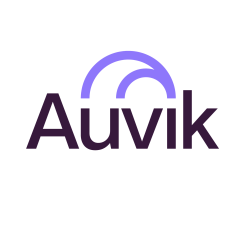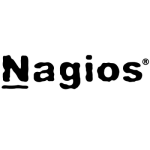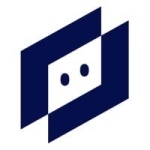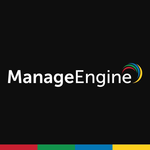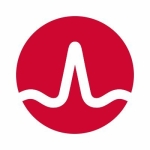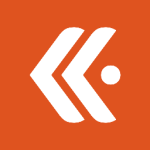What is our primary use case?
We're a managed services provider that caters primarily to movie theater clients. Most of our Auvik collectors are deployed at active movie theaters and point-of-sale environments.
We use Auvik to get alerts on network activity and server resource utilization. We monitor firewalls, interfaces, traffic bandwidth utilization, and VPN usage. Auvik alerts us when a VPN or other device goes down. We monitor aspects like port utilization and which switches are being used for what or how much traffic goes across ports.
We don't automate anything through Auvik. We have other tools we use for automating tasks on our systems. We're utilizing Auvik specifically for visibility into the networks and SNMP-assisted log alerts and functions like that. When those are triggered, other tools outside Auvik run the daily automation routines.
It provides a single integrated platform for monitoring, but we use some other RMM tools to log into our servers and things like that. Those have some monitoring built into them, so we get duplicate alerts along with those. If a hard drive on a server fills up, I'll get an alert from Auvik and our RMM solution. But there's no other platform offering more monitoring or alerts that Auvik's not giving us. Auvik gives us more than what all of our other platforms give us, and it's all in one spot.
How has it helped my organization?
Auvik helps us be proactive versus reactive. We stay ahead of the curve by getting alerts and knowing that a problem could potentially occur. The ability to resolve potential issues before they become a problem is a massive benefit for us.
The visualization is excellent, and our customers will speak to that too. We often export the map it creates and hands it off to customers, so we don't spend lots of time manually creating these things in Visio or Lucidchart. We don't have to use any of those kinds of tools anymore.
I might have had trouble with the visualization if I hadn't had all those sessions with them to walk us through all the technical points of it. There's a lot of information, so it's like trying to drink from a fire hose. They handed all that information about filtering and using the solution in those technical calls. I think they know that you'll get hooked and become a long-term customer once you get familiar with it and understand how intuitive it is.
The visibility into remote networks has been immense. It's quite a big project to swap out some network switches for a new customer. We weren't familiar with the current network. We deployed Auvik on the web and scanned the switch ports to understand what was on the other end of each switch. It helped us replace those switches and plug everything into their new destinations on the correct VLANs. It's a huge deal for us.
We have it set up so that various alerts go to different teams. If an alert comes in for hard drive corruption on a desktop, that will automatically go to the manager of the help desk team instead of the server infrastructure team. That works pretty well.
Auvik keeps our device inventories updated, saving us time because we know what is deployed and what has been decommissioned. It's also helpful from a billing perspective. It was a manual process of exporting reports from our RMM solution to do billing per device. We can do it all through Auvik because we can see what is active and what isn't.
We're a pretty small shop, so Auvik has helped us a ton. I would spend two to three hours a day manually doing this if we had to put it down to an actual number. With Auvik, it takes no more than 30 minutes of just browsing through alerts in one spot, creating tickets, assigning them to our resources, and taking care of things that need to be done.
What is most valuable?
Auvik is easy to use. It took some time to set it up, and they were pretty good to us. They offered us around six sessions with a technician to help us set up the monitors we wanted. After we were trained properly, I had no issues using it.
It has been crucial for us to have all these monitoring capabilities in one place. That's why we've been willing to shell out the monthly expense. It's helped us tremendously.
What needs improvement?
Configuring alerts is pretty tedious. It would be nice if they had a wizard who walked you through instead of having everything turned on or off from the start.
For example, it could have some radio buttons and ask you, "When this kind of alert happens, where would you like the alert to go?" Is it push alerts to a cell phone or an email address? Is it simply alerting? I think an initial onboarding wizard would help you to build out Auvik and get more out of it from the front end.
For how long have I used the solution?
We first used Auvik when it came out or when ConnectWise started pushing them. That was in 2019. We used it for about a year. I don't remember why we stopped using the product, but we picked it up again eight months ago and have been using it consistently since.
What do I think about the stability of the solution?
We've been with Auvik for eight months, and we've had a few alerts that Auvik collectors are not communicating with the solution. We had three of those in an eight-month period, and they were fixed within an hour. I'm pretty sure some of those came in overnight while they were doing maintenance. The uptime has been reasonable.
What do I think about the scalability of the solution?
It's pretty easy to scale up Auvik. We cater to movie theaters, so many of our sites are cookie-cutter from our end when we set them up. It would be nice to have the ability to copy a site and apply the template to another site.
This may be a solution that they offer, but I don't know. We've never been able to do that before. In terms of deploying the collectors, the scalability is fine. After that, you need to go in and approve all the networks you want to scan. That takes at least an hour.
How are customer service and support?
I rate Auvik support nine out of 10. I needed some help setting up an alert to monitor the VPN. I needed to get an alert if a specific VPN tunnel went down. I had no issues with that. They sent me a quick knowledge base article on how to configure the alert.
How would you rate customer service and support?
Which solution did I use previously and why did I switch?
Previously, we used some open-source solutions called Observium and Libre. They're both SNMP and sys log monitoring tools hosted internally. We had to maintain the servers and do the updates. A lot of time went into that, and it would break frequently. When it broke down, we'd lose a lot of data and dedicate significant resources to maintaining the solution. That's the main reason we switched back to Auvik. Once we got into Auvik, we realized we got so much more data through it.
Auvik's cloud platform was a critical reason why we switched. When you're hosting an on-prem solution, you need the resources to maintain it. You have to apply patches to the software and maintain the infrastructure it's running on. In terms of capabilities, Auvik is like a hybrid solution. The platform is on the cloud, but you have an on-prem collector agent running these scans. There aren't any gaps in the data that it can obtain, and it's much easier not to have to maintain the infrastructure.
How was the initial setup?
The deployment was straightforward. You create a site on the web portal, and it gives you an installer. You download the collector onto the device you want to monitor, and it starts collecting data. After deploying the collector, the network map takes 15 to 30 minutes.
We have Auvik deployed to around 25 sites, and our networks are heavily segmented. We have to create extensive rules on our end, which isn't necessarily an Auvik thing. We want one device to see everything on every network segment and VLAN. You have to have a rule specified for that. It took an hour at each location to get Auvik fully deployed. We started with those technical calls to understand the controls needed in the firewalls. Now we have a template that we use to deploy.
Configuring the alerts took four to six hours worth of technical calls. A lot of those were global. Those alerts could trickle down through each customer site as we had them set up. Our previous solution probably took the same amount of time to onboard a new site. At the end of the day, we have no internal resources dedicated to maintaining the infrastructure whatsoever. It runs and collects the data. We just log in and review it from there. It saves us at least two to three hours per week in the long run. It doesn't require any maintenance after deployment.
What's my experience with pricing, setup cost, and licensing?
In our experience, you get what you pay for. Everything is priced based on its actual value. I think Auvik is on the pricey side, but it has been worth it for us. It depends on how much you will use this and the level of visibility you need into the networks you're monitoring. Some managed services providers don't do much monitoring, while others monitor extensively, so it depends on how much it means to you. If you go with a low-end solution, you'll miss out on quite a few capabilities. On the higher end, you need to justify that cost.
I understand the pricing model with it, but I don't know the details about how much we pay monthly. I am not usually the one that handles it within our organization.
Which other solutions did I evaluate?
We did not look at any other solutions this time around. Initially, we were a ConnectWise customer, so we got a free trial to test it out. After we left, we decided to come back because it was a project where we needed visibility into a customer site. I knew Auvik provided that capability, and we did it. Once the owner of our company was able to get in and poke around through that, he was like, "Oh wow." So, he decided to sign back up for it.
What other advice do I have?
I rate Auvik nine out of 10. To implement Auvik, you must understand what you're trying to monitor. If you don't know where you're trying to go, it's much harder to pave the road. You must understand how to allow that monitoring within your infrastructure before trying to get it.
We ran into a problem when we were deploying the collector and were only getting limited amounts of data because particular ports are closed on the firewall. We weren't getting alerts within Auvik saying something wasn't happening because it was blocked. It just wasn't working, so we had to figure out the hard way to create rules in our firewalls to allow the collector to get its data.
Which deployment model are you using for this solution?
Public Cloud
If public cloud, private cloud, or hybrid cloud, which cloud provider do you use?
Other
Disclosure: PeerSpot contacted the reviewer to collect the review and to validate authenticity. The reviewer was referred by the vendor, but the review is not subject to editing or approval by the vendor.

